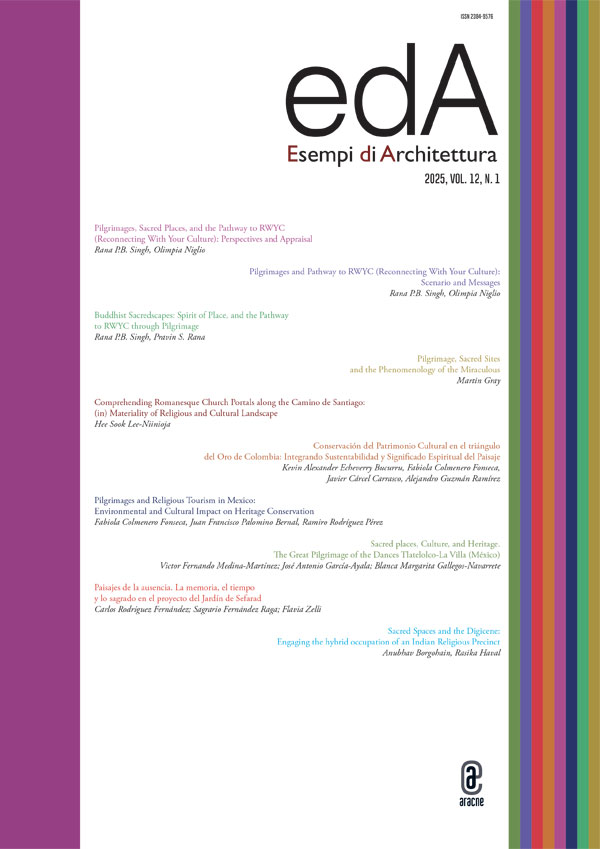Estratto dal volume Esempi di Architettura
Comprehending Romanesque Church Portals Along the Camino de Santiago: (In)Materiality of Religious and Cultural Landscape
DOI: 10.53136/97912218171955
Pagine: 89-104
Data di pubblicazione: Febbraio 2025
Editore: Aracne
SSD:
ICAR/14 ICAR/18 ICAR/20 ICAR/21
A church building is a symbolic place with a permanent manifestation of the divine project to be a part of the universe. Its portal is a liminal space that transforms from one place to another, composed of different features of nature and human factors in social behaviour. It is interpreted as something mental, perceptible, or visible. By entering the portal, believers sense the harmonious world governed by God and eternal life awaiting them. As the Christian faith grew throughout medieval Europe, Romanesque churches used portals to mirror their beliefs, specifically the Last Judgement along the pilgrimage road. Pilgrims seek retreats for spiritual growth, forgiveness, and guidance, or to ensure salvation when the Apocalypse arrives. They encountered church portals, which had a powerful impact on Christian allegories in architecture and ornamentation. Pilgrims started their journey from Europe and arrived in Santiago de Compostela, Spain (10C), where St. James’ relic was buried. The Milky Way (Compostela) may have led to its nickname, and the scallop shell on Galician shores became a symbol of various meanings, metaphoric, practical, and mythical related to Heaven. A question concerns Romanesque portals, admired or awed by medieval pilgrims within fixed time and space. How have their symbolic messages been transmitted after World Heritage (1993)? Describing a portal landscape is to view it as a mental layer of human knowledge laid over the physical surface. It is a memory and bears narratives transmitted through generations. This paper discusses the (in)materiality of pilgrimage portals related to the cultural landscape.


